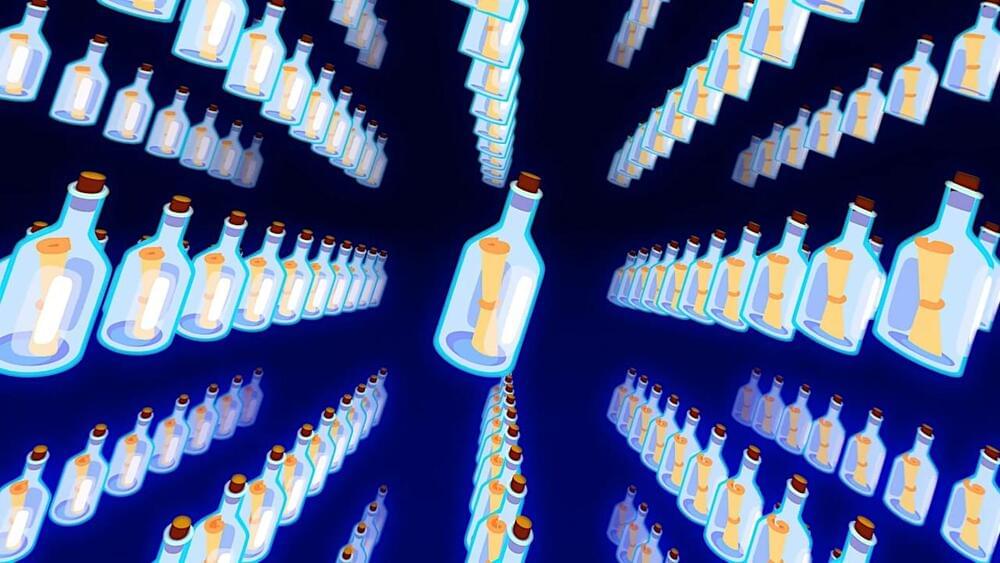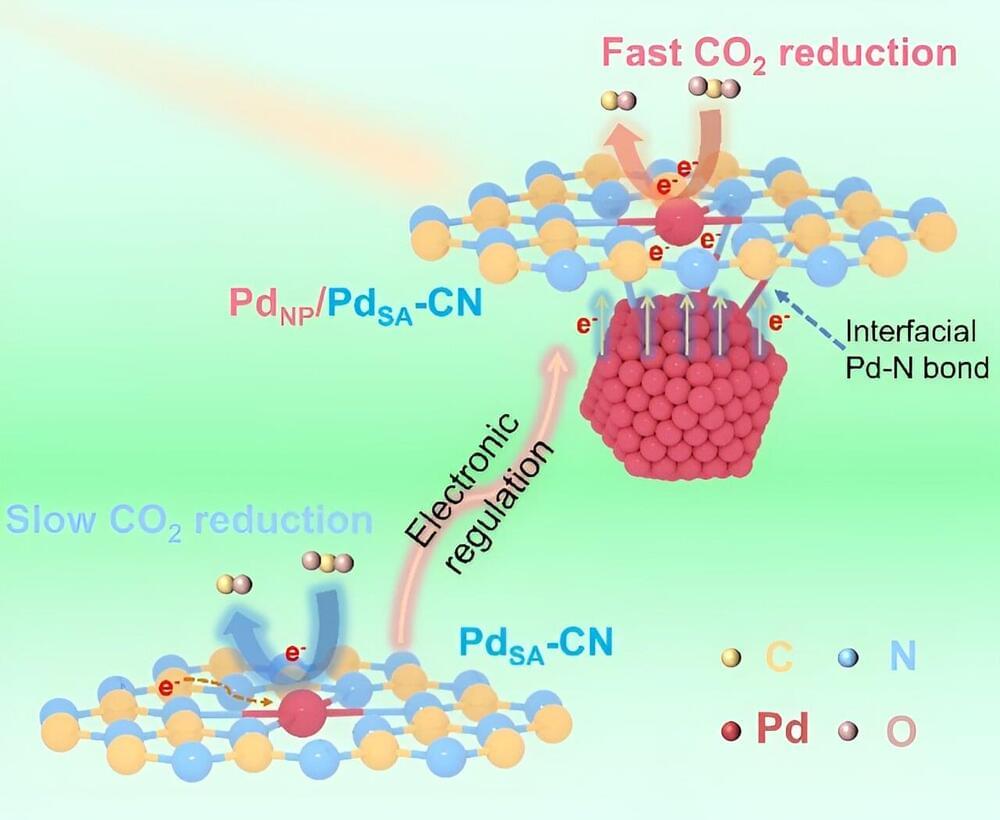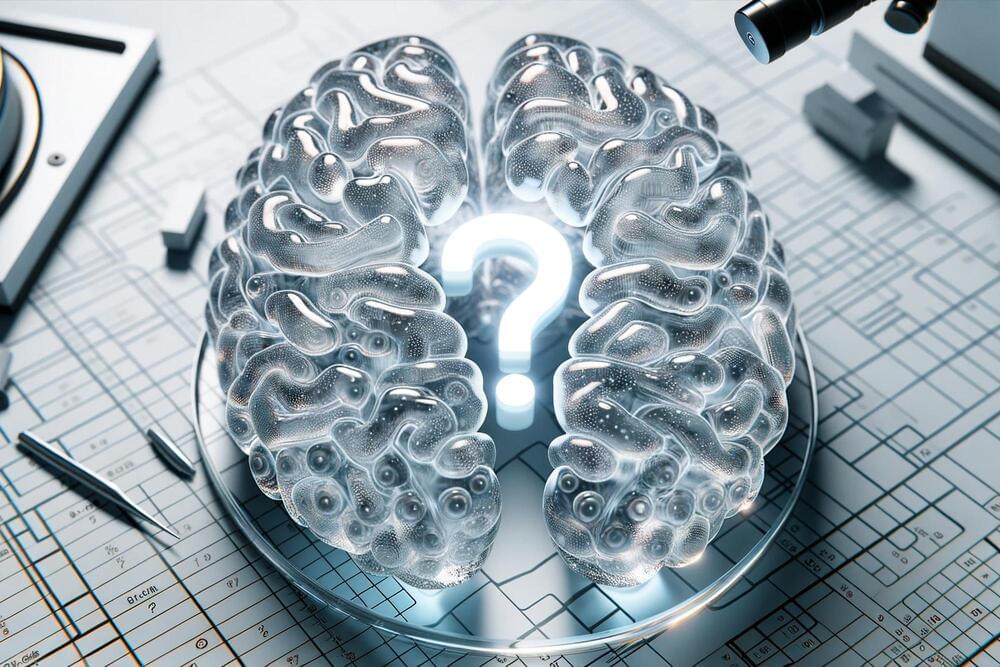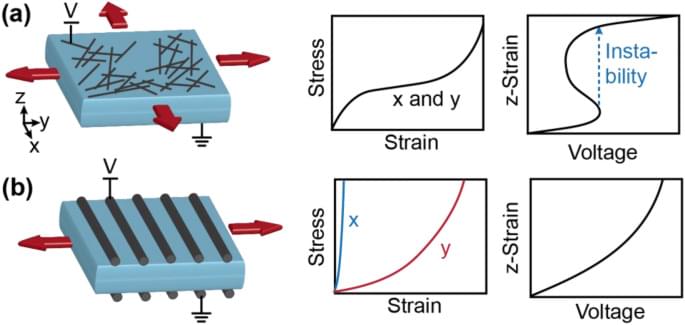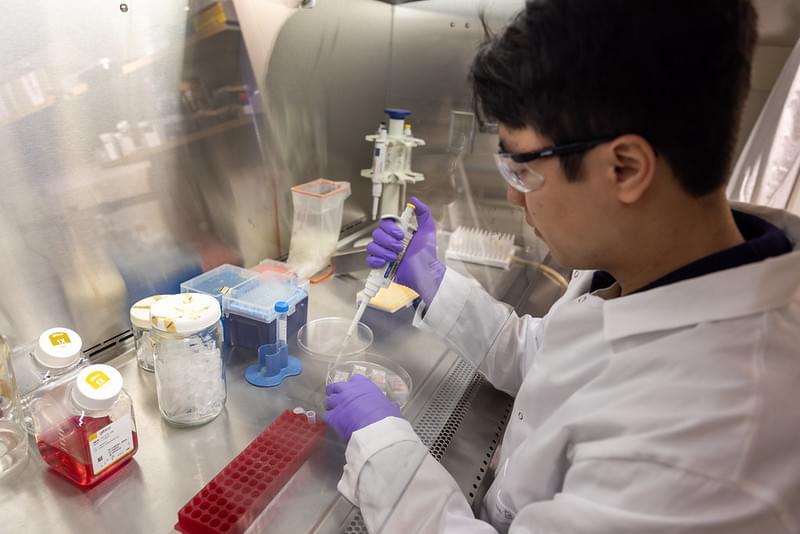Starship met up with Orion during more than 200 tests.
Shondra Pruett-Miller has taken many paths in her career with her love of genome editing always as a guiding light.
Kurzgesagt explained that there is so much matter out of our observable realm that the infinite universe may paradoxically be finite.
The challenge of regulating the electronic structures of metal single-atoms (M-SAs) with metal nanoparticles (M-NPs) lies in the synthesis of a definite architecture. Such a structure has strong electronic metal-support interactions and maintains electron transport channels to facilitate carbon dioxide photoreduction (CO2PR).
In a study published in Advanced Powder Materials, a group of researchers from Zhejiang Normal University, Zhejiang A&F University and Dalian University of Technology, revealed the engineering of the electron density of Pd single atoms with twinned Pd nanoparticles assisted by strong electronic interaction of the atomic metal with the support and unveiled the underlying mechanism for expedited CO2PR.
“As one of the most promising CO2PR semiconductors, polymeric graphitic carbon nitride (g-C3N4) featured with sp2 π-conjugated lamellar structures can offer electronegative nitrogen atoms to anchor M-SAs, forming active metal-nitrogen moieties (M–Nx),” explained Lei Li, lead author of the study. “However, stable M–Nx configurations forbid tunability of electronic structures of M-SA sites.”
Researchers have uncovered new insights into the way brain cells, or neurons, interact when making a decision, and how the links between these neurons could reinforce a decision.
The study — conducted in mice and led by neuroscientists at Harvard Medical School — is the first to combine structural, functional, and behavioral analyses to explore how neuron-to-neuron connections support decision-making.
The findings were recently published in the journal Nature.
Firoozan, M., Baniassadi, M., Baghani, M. et al. In silico optimization of aligned fiber electrodes for dielectric elastomer actuators. Sci Rep 14, 4,703 (2024). https://doi.org/10.1038/s41598-024-54931-y.
The Isaac Newton Institute for Mathematical Sciences (INI) in Cambridge hosted a research programme on one of the most pressing problems in modern physics: to build a theory that can explain all the fundamental forces and particles of nature in one unifying mathematical framework. Such a theory of quantum gravity would combine two hugely successful frameworks on theoretical physics, which have so far eluded unification: quantum physics and Einstein’s theory of gravity.
The Black holes: bridges between number theory and holographic quantum information programme focusses on black holes, which play a hugely important part in this area, on something called the holographic principle, and on surprising connections to pure mathematics. This collection of articles explores the central concepts involved and gives you a gist of the cutting edge research covered by the INI programme.
The first organized stem cell culture model that resembles all three sections of the embryonic brain and spinal cord, and produces a full model of the early stages of the human central nervous system, has been developed by a team of engineers and biologists at the University of Michigan(U-M), the Weizmann Institute of Science, and the University of Pennsylvania (UPenn).
“Models like this will open doors for fundamental research to understand early development of the human central nervous system and how it could go wrong in different disorders,” said Jianping Fu, PhD, professor of mechanical engineering at University of Michigan.
This work is published in Nature in the paper, “A Patterned Human Neural Tube Model Using Microfluidic Gradients.”
Argonne’s Science 101 series takes you back to the basics, with plain-language explanations of the scientific concepts behind our pivotal discoveries and our biggest innovations.
In this Science 101 video, postdoctoral researchers Gillian Beltz-Mohrmann and Florian Kéruzoré explore two of the biggest mysteries in science: dark matter and dark energy. These strange influences seem to be stretching the universe apart and clumping stuff together in unexpected ways. Together, they make up a whopping 95% of the universe, but because we can’t see or touch them, we don’t know what they are.
Researchers around the globe, including scientists at the U.S. Department of Energy’s Argonne National Laboratory, are investigating the nature of dark matter and dark energy through large cosmological surveys, particle physics experiments and advanced computing and simulation.
Find out more about Argonne Science 101 ►► https://www.anl.gov/science-101
Still haven’t subscribed to Argonne National Laboratory on YouTube? ►► http://bit.ly/2Vyzwvm.
Join us on Facebook http://bit.ly/ArgonneFacebook.



